Independently operated by the Arsenal Institute since 1971, Forum and Forum Expanded is the natural home for the Berlinale’s more experimental cinema, offering a big tent for unique and diverse visions from across the world. To me, it’s the one section that makes the Berlinale unique, with the types of weird and wonderful films that are hard to find consistently across one place at any other film festival.
It has been led by Barbara Wurm since 2023. Her background in Eastern European studies — including 11 years at goEast Film Festival — has unfortunately coincided with the Russian invasion in Ukraine, leading to a variety of films exploring Ukrainian life and resistance during this time, including legendary filmmaker Vitaly Mansky’s Time to the Target (2025, feature). We’ve also tried to cover the Ukrainian films as it’s the most vital struggle in Europe today, especially as the pathetic Trump is selling the country down the river at the moment, alongside a variety of other documentaries, hybrid and fiction efforts that make this section unique. Also make sure to check out our standalone reviews of Spring Night (Kang Mi-ja, 2024), Siren’s Call (Miri Ian Gossing and Lina Sieckmann, 2025) and Fwends (Sophie Somerville, 2025)!
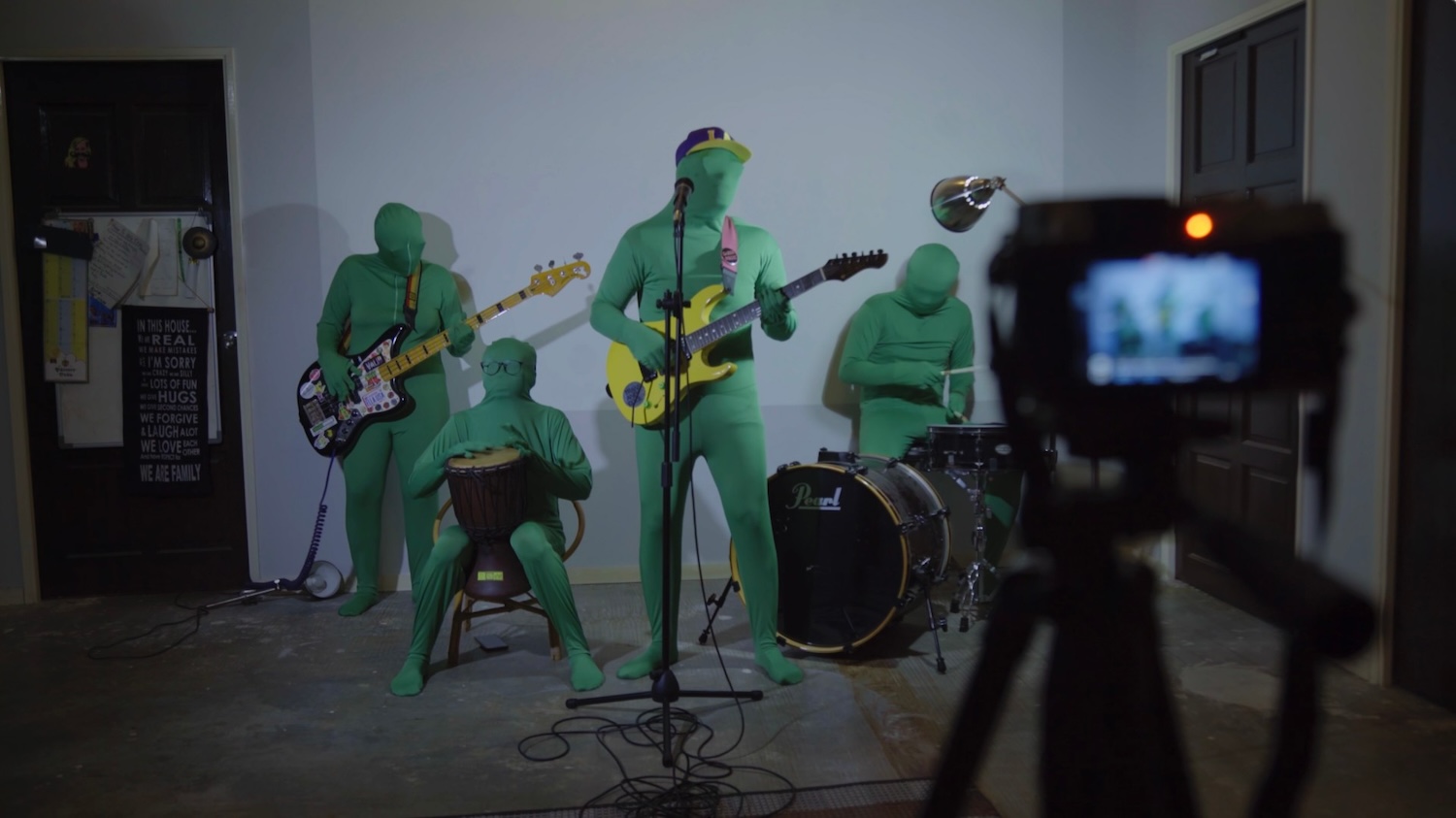
Queer as Punk by Yihwen Chen (2025)
Shh…Diam!’s very existence is a rebuke to the system, existing as a 75% queer band in the conservative-Muslim-majority country of Malaysia. With no representation in government and no recourse to human rights protections, the band — led by charismatic trans man Faris — try to be joyful and sing about queer identity in a country that would rather they didn’t exist.
They’re not a pure punk band, mixing garage rock, plaintive indie ballads (I loved “Lonely Lesbian”) and performance art, with lyrics that are direct and straight to the point, speaking of horniness, oppression and the troubles of simply existing as a member of the LGBTQI+ community in Malaysia.
Chen’s documentary is a relaxed, low-key, often-very-funny, sometimes-quite-upsetting look at their lives, particularly Faris’, as they navigate the thorniness of having the wrong gender identity documents, worry about reprisals from the authorities and go through the ups and downs of volatile governmental change. What it lacks in formal rigour, it more than overcompensates through the charisma — and remarkable bravery — of its subjects.
Written by RB

The Trio Hall by Su Hui-yu (2025)
A flashy, gleefully odd old-school variety TV show that feels at once retro and a dispatch from a future world on the brink of collapse, The Trio Hall revels in its sheer randomness. From its gallery of beauty pageant girls cosplaying as famous dictators to its John Cage and Martina Abramović-parodies to its SNL-like skits of AI-written scenarios, anything goes in this bizarre Cold War satire. Tackling colonialism, Western influence, misogyny and more against striking single-colour backgrounds, Su Hui-yu’s work is a provocative, entertaining jamboree that feels particularly topical in a world where all sense of reason has gone out the window.
RB
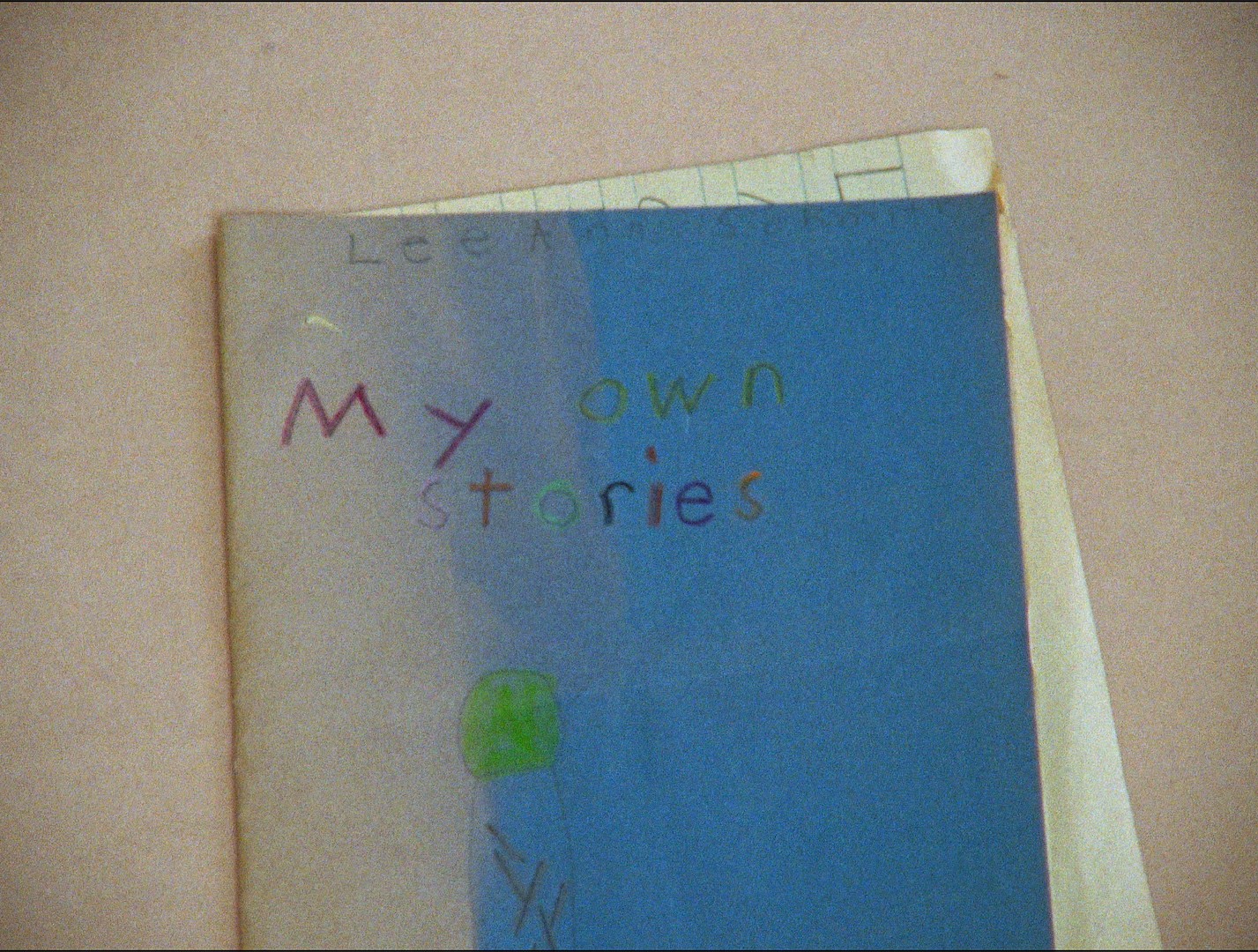
Evidence by Lee Anne Schmitt (2025)
It’s not until midway through Lee Ann Schmitt’s fourth feature-length film that the California-based essayistic filmmaker gets at the emotional core of Evidence (feature). Previously told via self-assured voice-over narration, Schmitt now, in a moment of poignant restraint, confines her words to intertitles (thus echoing last year’s Being John Smith [John Smith, 2024], in which the titular filmmaker reserves some unspeakable truths to the written word). She was 40, Schmitt writes, when she was pregnant. An age, her mother used to tell her, past which “women are invisible.” In these moments, Schmitt recounts, all she could think was: “I can’t wait.”
The personal, however, is less the dominant register of the 75-minute runtime than a springboard to Schmitt’s tracing of neo-conservative US politics of the last 50 years and beyond. With her father having been a former employee of the ammunition and industrial chemicals-producing Olin Corporation, Schmitt charts the company’s historical intertwinement with the intelligentsia of American orthodoxy, presenting a twofold history of toxicity: one that has repeatedly, most often through chemical leakages, put at hazard the communities in which the company was — and is — based, as well as, through vast institutional funding, infested millions of minds.
Written by Patrick Fey
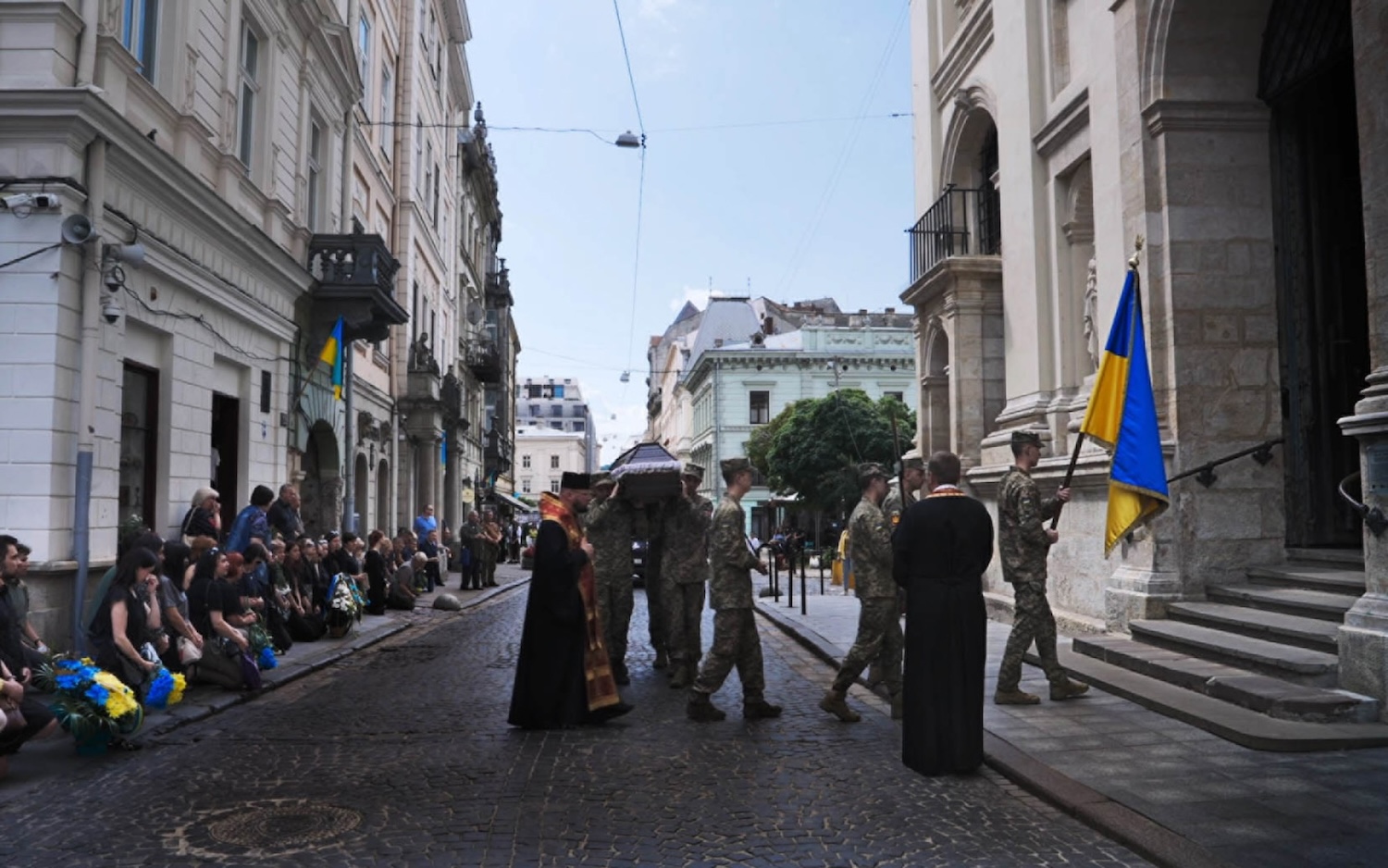
Time to the Target by Vitaly Mansky (2025)
Lviv is relatively safe from Russian aggression compared to cities in the east such as Odesa, Mariupol and Kherson. The streets look clean, there are pleasant boulevards, and the architecture boasts typically Central European neo-classicist and Art Nouveau stylings. But Lviv is still part of Ukraine and is far from immune from the utter horrors of war.
Storied Ukrainian-Russian director Vitaly Mansky follows up the devastating (and more effective) Eastern Front (2023) — which took us to the very frontlines of the conflict with its harrowing look at a volunteer medical battalion — with the very Wiseman-esque Time to the Target. I invoke Wiseman both for the standoffish, objective long takes Mansky employs and the epic length, stretching three hours in its portrait of a city, its people and the nation at large.
Shot over one year, it covers everything from gravediggers being paid almost nothing while they are tasked with building endless new graves for fallen soldiers, to influencers taking pictures of themselves in the street for Instagram, to military orchestras rehearsing and performing nationalist songs, to weddings to funerals… to more funerals, to even more funerals, to even more funerals. It’s a tough one to sit through.
What’s apparent through all this is the incredible resilience of the Ukrainian people, unbowed by the invasion and willing to fight right until the end. (One soldier even says that Poland would give up in a second — that’s why they support Ukraine so much.) It is also readily apparent that Mansky — best known for his North Korean documentary Under The Sun (2015), which exposed the reality of everyday life in the totalitarian nation — will not stop fighting the Russian government from his end either. He was attacked with paint in 2022 before entering the theatre for Artdocfest in 2022 and has since been put on the Interior Ministry’s wanted list for slander against crappy filmmaker and Russian propagandist Nikita Mikhalkov. Mansky’s work, which has pivoted into this urgent territory since the war, must be protected and cherished by the wider documentary community.
Even as it lacks the focus of his previous works, and stretches an hour or two longer than it needs to, especially as some parts do get a tad repetitive, Time to the Target remains essential viewing for its powerful portrait of an unbroken people during a needless, pointless war.
RB
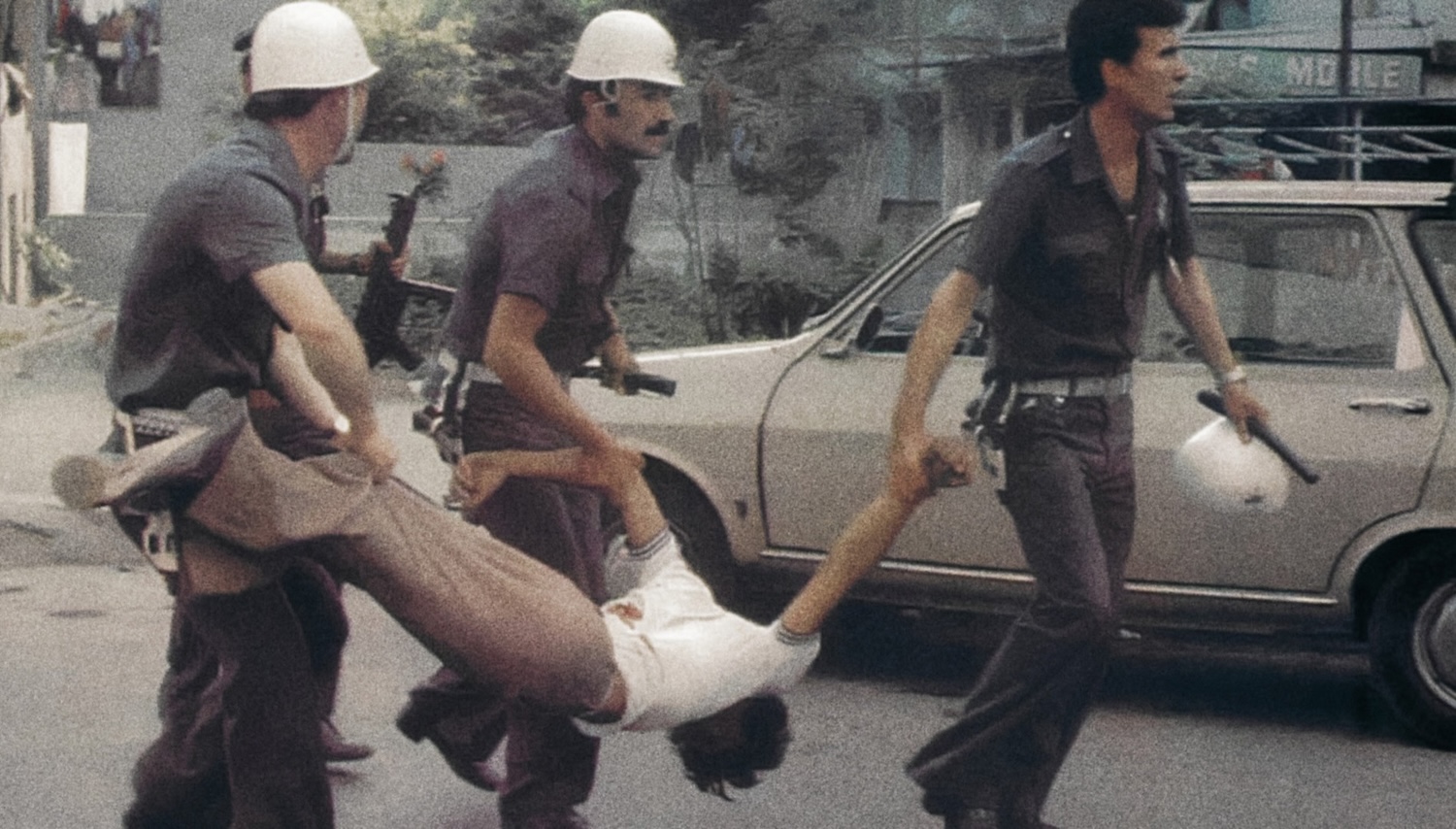
Scars of a Putsch by Nathalie Borgers (2025)
It all begins with the landscape of a densely hairy belly. The torso that the Brussels-born filmmaker maps in the opening scene belongs to her partner Abidin Ertuğrul. Throughout the 1970s, Abidin was an active member of Ankara’s progressive student movement, an affiliation that did not cease after a consequential Saturday in 1976, when a group of fascists brought the university shuttle bus to a halt, identified Abidin, and shot him seven times.
The titular “Putsch” is a recurring one during these years in Turkey, though, due to the country’s NATO affiliation, graciously overlooked by the Euro-Atlantic community at the time. They took place both before (in 1971) and after the attack (in 1980) that Abidin miraculously survived and that left him and his many comrades stained far beyond visible infirmity. Borger’s film, however, is not so much a (hi)story of demise than of tenacity, bundled through the perspectives of those who, despite everything, kept trying to uphold the spirit of the student generation of 1968. The indelible paint in which they write “DEVRIM”, the Turkish word for “revolution”, on the stadium stand of Abidin’s progressively minded alma mater, Ankara’s Middle East Technical University, proves to be a defier of time and its strange political manifestations.
PF
Forum Expanded
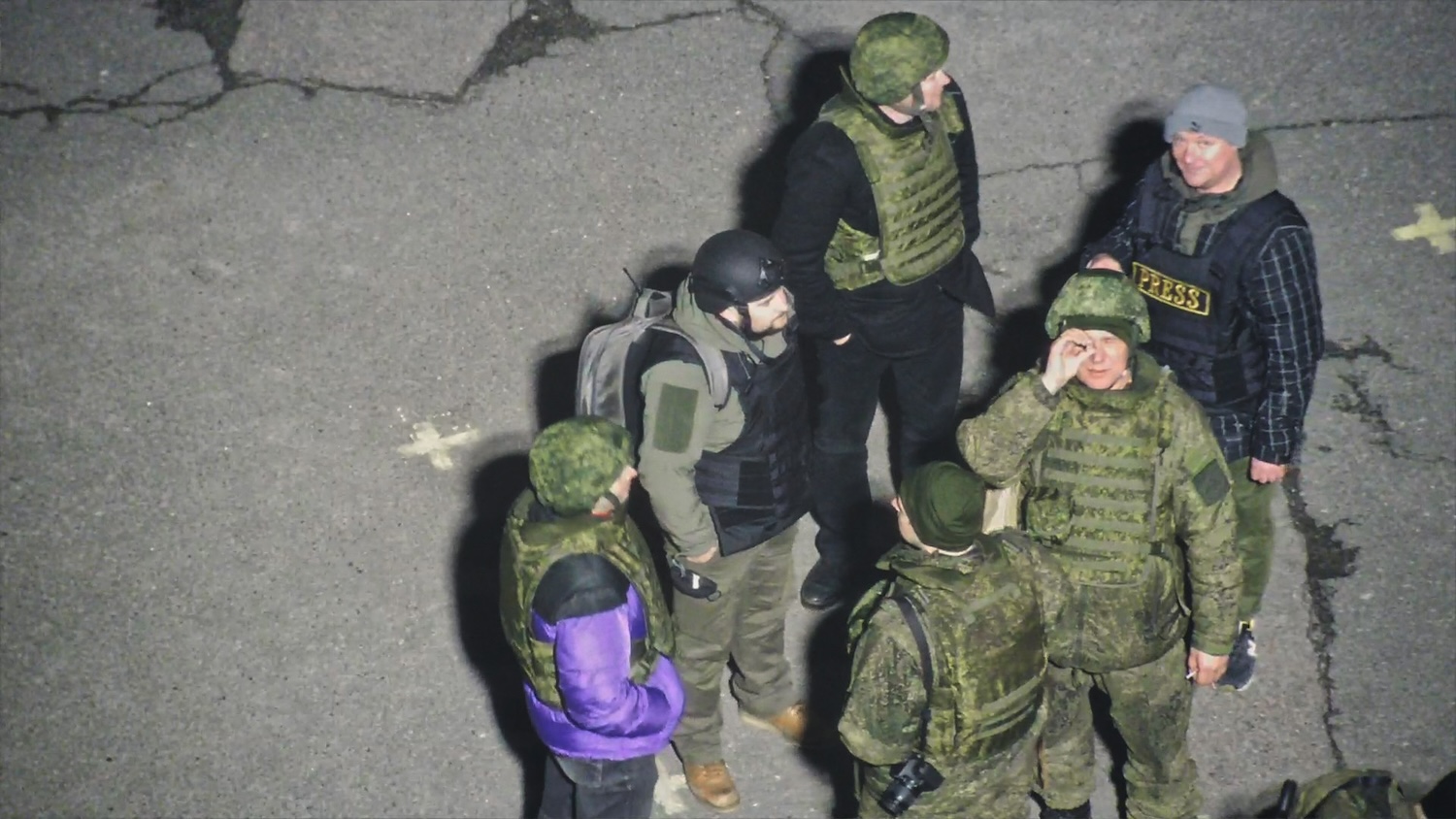
Special Operation by Oleksiy Radynski (2025)
Composed entirely of CCTV footage caught from the Chornobyl power plant as Russian troops occupied it in the early stages of the invasion, Special Operation makes an interesting double-pairing with last year’s Intercepted (Oksana Karpovych, 2024), which was based on real phone calls from Russian soldiers ringing back home.
But Radynski’s film lacks the immediacy of Karpovych’s bleak yet strangely hopeful work, instead keeping things rather objective as the found footage observes Russian tanks rolling in, the Ukrainian flag being pulled down and soldiers standing around and smoking.
It all looks quite tedious. In 99% of wars, very little actually happens. The film mostly consists of men standing in a car park, waiting for things to do. The most interesting part is when they take a group photo. But this was no mere waystation on the way to Kyiv. This was the source of extremely fierce fighting, at one point raising fears that the site of the worst nuclear disaster in history would once again threaten the safety of the entire continent. It was also the base of many horrendous Russian operations that struck deep into Kyiv Oblast. Evil doesn’t get more banal than this.
As a lot of the CCTV evidently didn’t record audio, the film also features extensive re-recording of trucks arriving, people walking, engines running and doors opening and closing. Unfortunately, a lot of the sound, especially the sound of feet on gravel, is very repetitive and samey, taking me out of the film’s overall vision. It’s understandable why Radynski wouldn’t want to make a silent film, especially considering the movie’s slowness in the first place, but the artificiality of the sound mix itself felt at odds with the starkness of the imagery itself. It’s a shame, especially considering how important Ukrainian filmmaking is right now in documenting this barbaric invasion in real time.
RB
